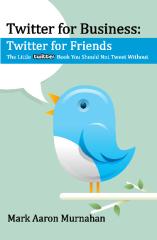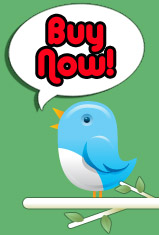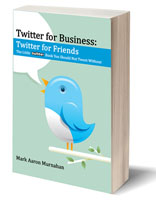“Twitter can you hear me?” This is a question that many Twitter users are asking. At first, I was concerned that it was just me. Maybe people just didn’t hear me … maybe I didn’t bathe enough and stunk up the place. That would have been a great scenario for Twitter, but I have found without doubt that this is not limited to me, and that it is a widespread issue. There are some specific reasons for this, and I want to share my thoughts and I want to hear yours. I hope that we can get this all sorted out before the famous Twitter question of “What are you doing?” becomes “Are you there?”
Do You Hear Me?
I may not be the best example to pull from, but I have used Twitter, a lot. In fact, I used it so much that I tweeted my answer to “What are you doing?” over 20,000 times and found so many interesting facets of Twitter that I wrote a book about it. Yeah, a book! I have met some amazing friends, and learned a lot along the way. I have encountered some of the very best things Twitter has to offer, and I am a huge fan. My list of reasons for loving Twitter is long.
Most people would perhaps never even imagine a book’s worth of useful insight about Twitter, and much less publishing it to share with the world. I did, and it was done to preemptively meet the challenges of Twitter growth to the point of deafness. Deafness from people who tried it and did not understand Twitter and left. Deafness from those who saw little value because they are just out to look popular with a lot of followers. Deafness from many other ailments due to an explosive growth curve.
It has been my attempt to help new and existing users to find the greatest value of Twitter and help them to make it more useful. Am I too late? I do not think so, but we will all determine the outcome.
Measuring Twitter Engagement
You may wonder how I measure whether Twitter is listening. There are many ways, but I will show you a couple which cannot be denied. I ask questions of people, and I watch statistics … I am a marketing guy, after all. Some people even tease that I may be leaning toward autism in my watchful eye on trends and numbers. It is easy to see when somebody reads a message, and I will show you how. First, I want to start with a very social question that I asked, and it was really just because I wanted to know. I was trying to connect and start a conversation with people. I recently asked a question as follows:
I am curious to hear you answer the official Twitter question: “What are you doing?”
I received a lot of replies. After all, it was a good question. I loved reading the replies and it started some fun conversations. So does this message really answer a question of deafness? Yes! It was an engaging question that encouraged a response. I was delighted with the response. All the same, as a studier of numbers, I would bet dollars for tweets that I would have had ten times the response rate in May.
Another measurable way to see the deafness cloud hovering over Twitter is to look at any Bit.ly link. Bit.ly is a massively used URL shortening service that will allow any user to see how many people have actually clicked on a given link. I will give you a fantastic example. Here is a tweet sent by the number one most followed user of Twitter, Ashton Kutcher (@aplusk). His tweet was about The White House wanting people’s input on health care reform. It encompassed topics of government, health care, and small business, all at once. These are wildly hot topics, so one could assume it would have a lot of clicks. Go see for yourself … you can click here to see how many people actually clicked on the link. It died on the vine, and gives a view of how people are busier sending tweets than actually paying attention. This is coming from a guy with nearly 3,000,000 followers! What do your followers do?
When Did Twitter Go Deaf?
This all begs the questions of “When did Twitter go deaf?” and “What can we do about it?” I hope to have an answer, but I do not have the only answer. We can decide the right answers collectively. My answer is to help people understand the best assets of Twitter (relationships) and how to be sure they are seeing what they want to see. This may be a long way around, but the idea is that if you, and you, and you and the rest of you are able to manage your use of Twitter more efficiently, the whole service is improved.
In the past couple months, as I was staring into my monitor for days on end seeking inspiration and working on my LCD tan, I seem to have lost Twitter. Somehow, as I was writing until my fingers hurt, the deafness of “The Twitter broadcast” has grown like that little bump under your arm that gets bigger and bigger, until it is time for a biopsy to check for cancer.
Maybe you can say that I am manstruating and I just need to change my manpon, but I know that many others have noticed the same issues. I think it would be really nice if we could all listen again, and perhaps that way maybe we can be heard, too.
If you believe that helping others to use Twitter more efficiently will help, please tell them about my new book, “Twitter for Business: Twitter for Friends”



